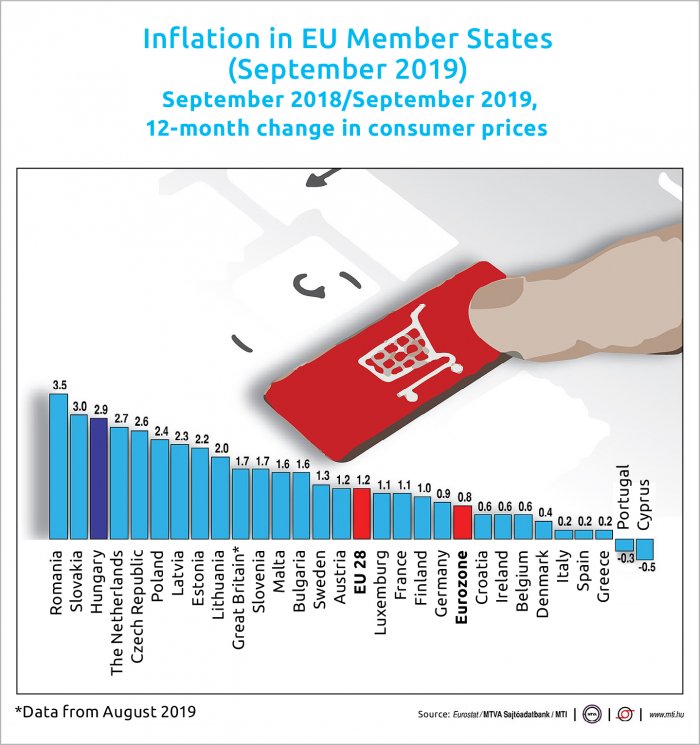Driving Force for Economy Showing Signs of Weakness: Will it Last?

Both industry and the construction sector produced relatively weak data in the last month of the summer. Is this a sign that the Hungarian economy is beginning to lose momentum, or is it just a momentary ailment?
The latest figures from the construction sector revealed a weak end-of-summer performance. That followed a period where there was not a single month in the past more than a half year when the year-on-year expansion of the construction sector was below 20%.
However, the Central Statistical Office (KSH) data for August show that the volume of construction output, based on raw data, was a mere 5.9% higher in August this year than a year earlier. What is even more eye-catching is the 10.5% decrease the sector produced from the previous month.
The performance of the sector skyrocketed in March, when a massive 67.6% increase was registered in the construction output volume, and growth rates between 20-40% have characterized the sector in the past few years.
In light of the fact that the construction sector has been one of the main drives of the Hungarian economy, analysts understandably pose the question of whether this is only a temporary slow-down, or is it here to stay for a longer period of time?
Although a single month of bad performance hasn’t shattered the thriving tendencies, and the impetus might well return in the coming months, it is quite likely that the dynamic growth rate of 30-40% is now a thing of the past, analysts say.
Golden Days
According to business portal portfolio.hu, the more than 10% month-on-month decrease is not too dramatic regarding the fact that, one month earlier, the sector was able to produce a monthly growth of 9.6%. But such data could indicate that the recent golden days of Hungary’s construction sector might be nearing the end. Based on this, it could also happen that the sector will not contribute to this year’s GDP growth as strongly as it has before.
According to KSH data, the volume of output of the two main groups of construction developed inversely: in the construction of buildings it grew by 14.1%, while in civil engineering works is lessened by 3.5%. In the construction of buildings, the increase was due to residential, cultural and industrial buildings.
Based on the data of new contracts, analysts do not expect robust growth in the coming month. KSH data shows that the volume of new contracts increased by 3.2%; within this, the volume of new contracts concluded in the construction of buildings went down by 2.5%, while in the construction of civil engineering works the volume grew by 10.1% year-on-year.
The volume of the August month-end stock of contracts at construction enterprises decreased by 12.1% compared to the August 2018 data. The stock of contracts volume increased by 49.8% for the construction of buildings and decreased by 25.6% for the construction of civil engineering works.
It was not only the construction sector in the doldrums; Hungarian industry also performed below expectations in August. In August 2019, the volume of industrial output grew by 0.3% year-on-year. Based on working-day adjusted data, production rose by 2.7%. Industrial output, according to both the seasonally and working-day adjusted index, was below the previous month’s level by 1.2%.
Slowing Markedly
In its detailed second reading, KSH said that year-on-year output of Hungary’s automotive sector, a major engine of industrial growth, edged up 2% in August, slowing markedly from the previous month.
In the period of January-August, industrial output rose 5.6% year-on-year compared to the first eight months of 2018. The volume of export sales (representing 63% of all sales) went up by 6.2%, while domestic sales grew by 6.4%.
Both construction sector and industrial data indicates that the Hungarian economy lost momentum at the end of the summer, therefore all eyes are now on the macroeconomic data of the next few months, and these figures will have to contend with the ongoing effects of the U.S.-China trade war, Brexit and the weakening German economy, according to portfolio.hu.
However, domestic demand is still strong, the retail sector keeps expanding due to the rising wages, and both can help buttress the Hungarian economy. On the production side, however, there are some worrying signs, the site concludes.
In the meantime, the International Monetary Fund has released its latest World Economic Outlook, in which it has raised its projection for Hungary’s GDP growth this year to 4.6%, up from 3.6% in its April forecast. It also believes, however, that the country’s growth will slow to 3.3% in 2020. The IMF sees the unemployment rate dropping further to 3.5% in 2019, and to 3.4% in 2020.
The organization notes that the Hungarian government’s “Program for a More Competitive Hungary” and the central bank’s extensive agenda to improve competitiveness, especially of SMEs, rightly seek to boost potential output.
Numbers to Watch in the Coming Weeks
KSH will publish data on Hungary’s labor market on October 29, when it examines the period between July and September. On the last day of October, a second estimate of retail trade of goods will be released by the statistical office. But before all of that, Moody’s Investors Service’s second review for this year is scheduled for October 25. Moody’s didn’t update Hungary’s sovereign rating in its first review in May.
SUPPORT THE BUDAPEST BUSINESS JOURNAL
Producing journalism that is worthy of the name is a costly business. For 27 years, the publishers, editors and reporters of the Budapest Business Journal have striven to bring you business news that works, information that you can trust, that is factual, accurate and presented without fear or favor.
Newspaper organizations across the globe have struggled to find a business model that allows them to continue to excel, without compromising their ability to perform. Most recently, some have experimented with the idea of involving their most important stakeholders, their readers.
We would like to offer that same opportunity to our readers. We would like to invite you to help us deliver the quality business journalism you require. Hit our Support the BBJ button and you can choose the how much and how often you send us your contributions.









